
Welcome, from sunny Australia!
The Combustion Chamber

The Combustion Chamber
Once finally in the combustion chamber, the air needs to be stirred, but not by having to go over domed pistons, etc. The best shape chamber is one that has the inlet and exhaust valve at a shallow angle to each other, and so the older types of twin cam engines, eg, Suzuki GTi, have a 45° to 50° angle between them, and they would benefit greatly by reducing it to around 20° to 25°. (Audi Quattro, Toyota 20 valve 4AGE's, Toyota 4AFE's, Toyota 3SFE's, etc) By keeping the valves at a shallow angle, good compression can be had without resorting to high-domed pistons. Most pistons need a dome to get high compression's, but ratio's up around 11:1 can be had without any great difficulties. The sides of the combustion chamber are usually flat, and should cover a similar section on the top of the pistons, so causing a very important 'squish area', which creates the sort of turbulence we need to get good power. Pistons with high domes can make for a difficult flame path, and so you're often better off using a flatter piston even if it means a little lower compression.
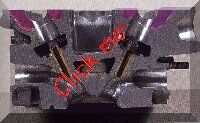
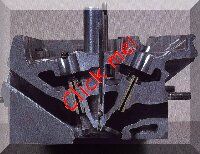
Flycuts will have to be made to
accommodate the valves, and they should be as shallow & smooth as
possible so there are no sharp edges to cause hot spots, which cause
pre-ignition ... (and possibly even worse, pinging, or detonation as
it's often called.)
Valve seats & valves do benefit
from triple angle cuts, and are well worth the extra trouble.
It is also worth getting the top of the
piston OR combustion chamber ceramic coated to help keep the heat where
it should be - Don't coat both as the chamber can become too hot and promote detonation.
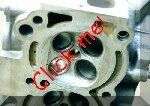
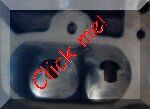
A Formula Atlantic Toyota 4AG combustion
chamber & inlet port. 240hp @10,000rpm
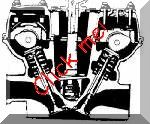
A standard 4AGE head in cross section.
115hp - 134hp standard.
Also important is the squish areas, for
best power. A 'squish area' is a part of the combustion shamber that is
made to very nearly come into contact with the piston when the piston
is at top dead centre. There's usually less than 0.030" (0.75mm)
clearance in these areas in such cases. What they do is cause the
combusting gasses to rapidly travel towards the centre of the combustion
chamber (or where ever intended) and increase turbulence, thus
increasing the combustion rate.
It's increasingly important as the revs
build up, so more attention is needed. Ford/Cosworth experimented
extensively with so-called open and closed combustion chambers, and
found that a well designed closed chamber always made more power. (In a
naturally aspirated engine, at least)
Some examples -
 |
The Toyota 16 valve 4AGE head, which is very similar to the Cosworth 1600cc BDA. It has very good squish areas on either side of the valves, thus helping combustion & performance. |
| Here's a really nice head, as built by Mazda on one of their latest V-6 engines. It has a good included valve angle (27°) and pretty good squish areas. |
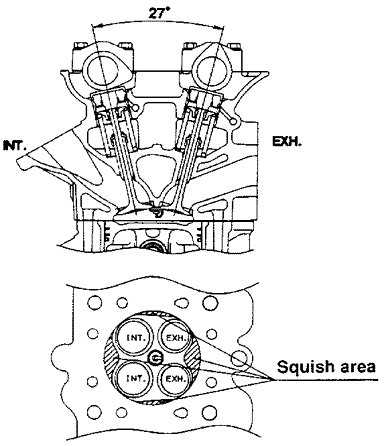 |
Continue on to -
Exhaust system - Valve gear - Crank,
con-rods, and pistons - The block - Other stuff - Other
Tuning - Further reading and race car sounds
For more motorsport links, try the motorsport section on my links page.
Back to the Index page
Page & contents where applicable © Bill Sherwood